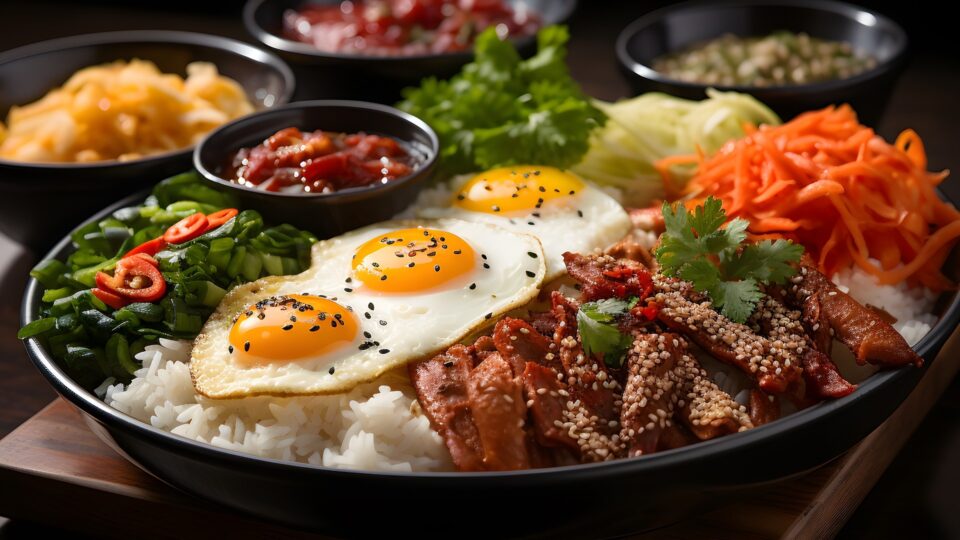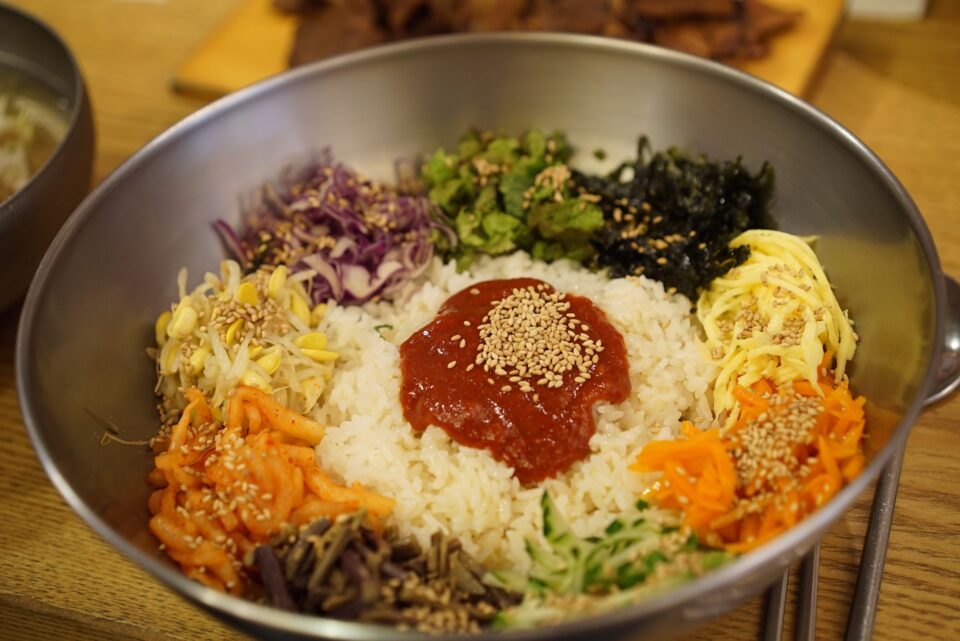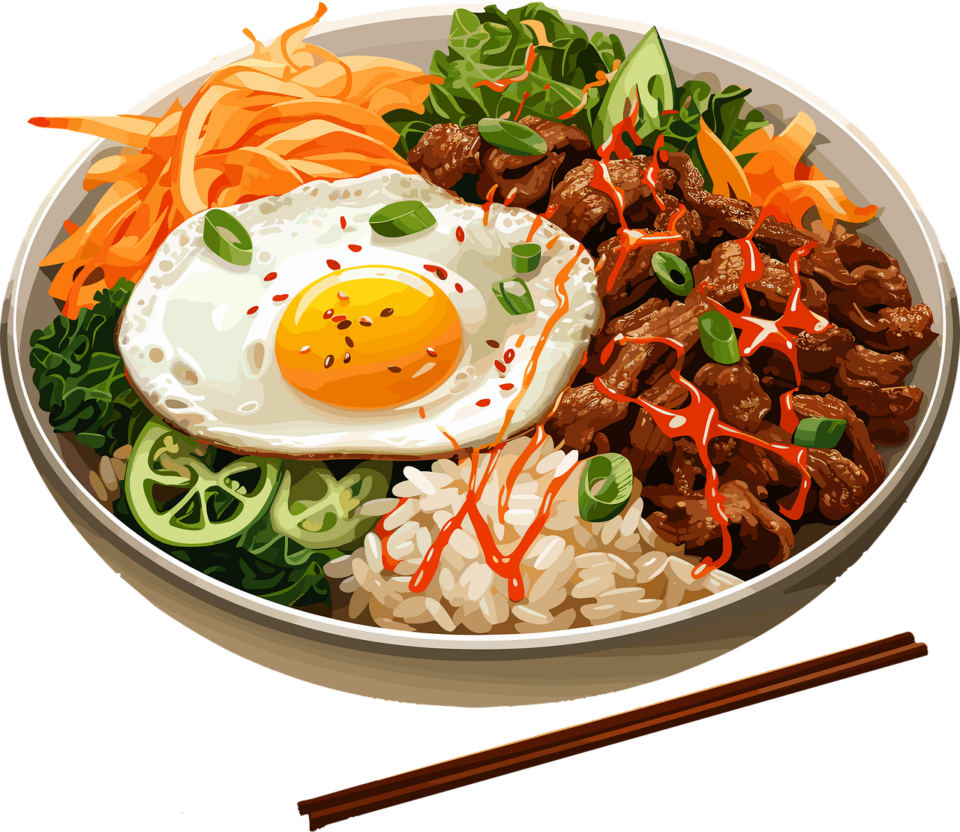Demystifying Bibimbap’s Role in the Korean Wave
A symbol of Korean solidarity and plurality, as well as the ability of food to serve as a cultural ambassador, bibimbap is being consumed across countries as the Korean wave advances

Bibimbap, as a representative of Korean cuisine, has actively served as a cultural ambassador for Korea, introducing people to the richness and diversity of the country. Photo: Courtesy of DuckaHouse from Pixabay
Synonymous with the Korean wave, Hallyu has captured the attention of consumers with its enthralling films, dramas, variety shows, music, fashion, and culinary offerings. What, though, is the key to this pervasive phenomenon? It turns out to be in bibimbap, a staple in Korean cuisine. What the Korean wave fundamentally reflects—a sense of solidarity and shared love through an exclusive cultural exchange—is embodied in bibimbap’s deeper significance of unity in diversity.
The Korean wave speaks to how we have developed an affinity toward consuming Korean content in that it has also affected how we have come to embrace the cultural facet of Korea—K-pop, K-dramas, and Korean films being some of the biggest examples. The meteoric success of Korean pop culture and its growing global footprint have only catalyzed our curiosity about all things Korean, including its vibrant and diverse cuisine.
Even more striking than their range of flavors are the colors that pop and the exquisite presentation of Korean cuisine. From the iconic bibimbap, a mixed rice dish with veggies, meat, and a spicy sauce, to the soothing aromas of kimchi stew, Korean food offers a singular dining experience that is satiating and wholesome.
Several recipes have been passed down through the generations, preserving the country’s unique cultural tradition molded by Confucian ideas. The “bapsang,” or traditional Korean table arrangement, is one way it finds expression. A variety of accompaniments, including rice, soup, and kimchi, are beautifully paired for a delectable and balanced feast.
Korea’s Bibimbap Culture: Background and Importance
Korean history has it that Bibimbap is culturally valuable. Bibimbap, or “mixed rice,” in English, has its roots in the Joseon Dynasty (14th–19th centuries), when it was a royal dish. It was cooked with the best produce and served most artfully. That explains the value of food presentation in Korean culture.
Bibimbap, says one of my Korean friends, “symbolizes Korea’s diversity and unity beyond just being a savory dish. While the vivid variety of greens signifies the range of Korean food, the act of integrating its ingredients represents peace and unity.” I think the deep resonance of this symbolism with Koreans contributes to the global popularity of bibimbap.
Gochujang, the fiery sauce that is drizzled over bibimbap, is a must-have item. Its tastes, which consist of fermented soybeans, red chili peppers, and glutinous rice, not only give it a spicy kick but also encapsulate the spirit of the Korean people.

Korean Buddhist traditions are also a major influence on bibimbap. Monks at Buddhist temples engage in “balwoo gongyang,” a type of meditation in which they eat thoughtfully and relish the simple flavors of a vegetarian meal. Bibimbap symbolizes balwoo gongyang because of its sheer simplicity; it just blends rice, vegetables, and sauce, promoting appreciation for the bounty of natural resources.
In Korean homes, bibimbap is a staple dish. It connects friends and family as they gather around a table to mix their bowls, and sharing and savoring the hearty meal strengthens the bonds between family members and fosters a sense of community.
How Bibimbap Represents Korean Culture to the World
Bibimbap has gone global today, reflecting the soul of Korean cuisine in its colorful garnishes, mouthwatering flavors, and one-of-a-kind display. It has become a cultural ambassador influencing the global culinary world, through which Korean food has grown in popularity and increased awareness as a vital component of Korean culture.
Say you’re dining in a bustling Korean restaurant, and your bibimbap is served. You have your first large spoonful of bibimbap, and an explosion of taste fills your mouth! The nutty flavor of sesame oil, the tang of fermented kimchi, and the umami richness of soy sauce! You can’t help but fall for it.

So, there is a clear connection between the rising Korean Wave and the growing fondness for bibimbap. With more familiarity and love for the dish, consumers are getting more interested in trying other Korean dishes and the opening of Korean eateries all over as a result of an increasing appetite for Korean food has contributed to the propagation of the Korean wave. Bibimbap in all its glory, has evolved into a meal that honestly speaking I chose as a springboard to explore Korean cuisine.
Anecdotally, due to its adaptability, countless permutations are possible, satisfying a wide range of dietary requirements and palates. Everywhere in the world, bibimbap has won over hearts with its diverse offerings, ranging from the classic Dolsot bibimbap served in a sizzling hot stone bowl to more contemporary versions made with fusion ingredients.
Bibimbap and the Korean Wave: The Continued Growth of Korean Cuisine
Given our growing interest in Korean content, I’m certain that the Korean wave will keep building, and with it, a passion for culinary champions like bibimbap as fans of Korean pop culture dig more into Korean cuisine.
Bibimbap has, in a sense, been a window into Korean culture, drawing people from all over the world to dive into the gorgeous, grand realm of Hallyu. A symbol of Korean solidarity and plurality, as well as the ability of food to serve as a cultural touchstone, bibimbap is being consumed across countries as the Korean wave advances.
So, next time you indulge in a bowl of bibimbap, know that you’re not just having an excellent meal; you’re also getting a taste of the Korean wave firsthand.




